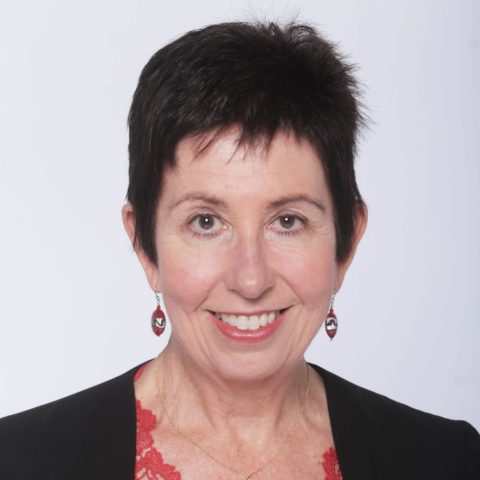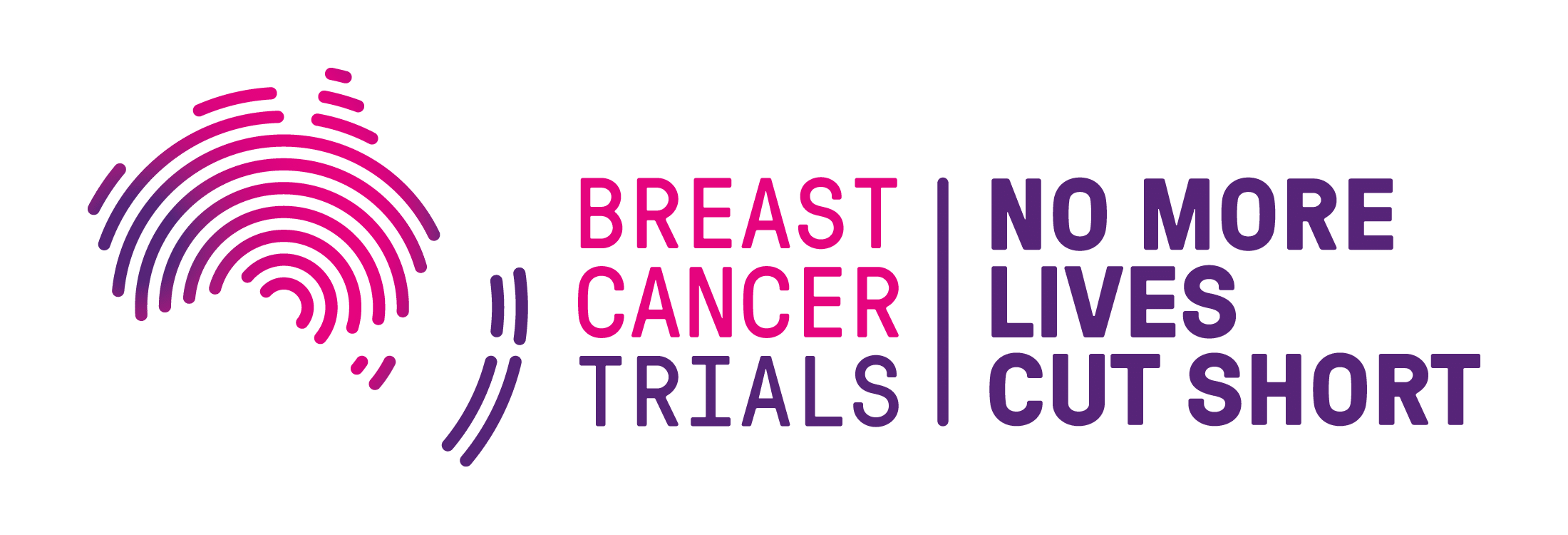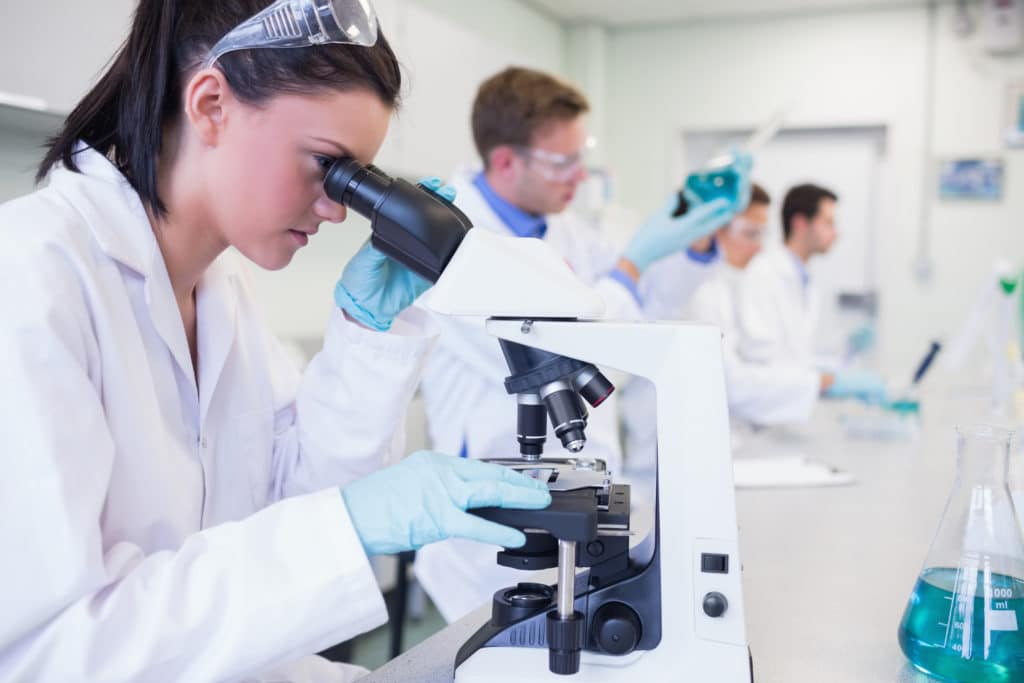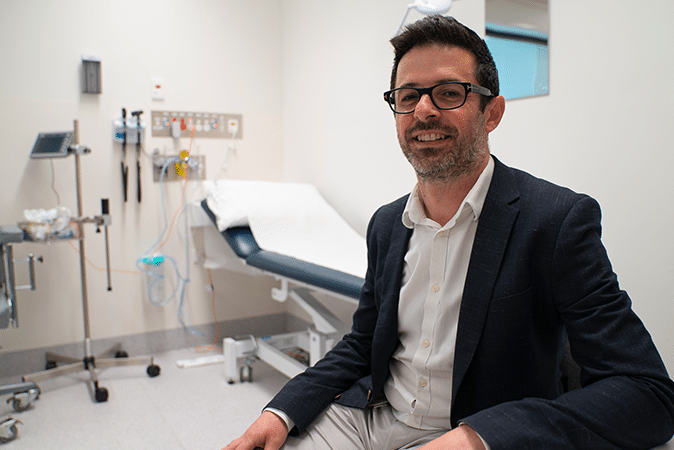What Is Genetic Testing?
Genetic testing involves looking for a fault or mutation in genes that cause a high risk of developing breast and ovarian cancer within a family. These mutations are often found in the BRCA1, BRCA2, and PALB2 genes. Genetic testing for breast cancer testing is done on a blood sample, usually starting with an affected family member. If a gene mutation is detected, other family members can be tested. This is known as predictive genetic testing.
Genetic testing is typically offered through a cancer clinic if appropriate, and a referral to a familial cancer clinic is arranged to consider genetic testing. Before testing occurs, you are counselled about the process to understand the potential implications.
Associate Professor Judy Kirk is a cancer geneticist at the Familial Cancer Service at Westmead Hospital.
She says genetic testing is looking for a mistake in the gene that causes a high risk of breast and ovarian cancer within a family.
“It’s testing that’s done on blood, in a family with a pretty strong family history of breast cancer where we would start by testing an affected family member.”
“Usually, we test a women who’s had either breast or ovarian cancer, and we search a number of different genes to try and find a fault or mutation, that’s passed down through the family that causes that high risk,” she said.
“When we do that, there are a number of different genes that we can test and the ones that relate to breast cancer are two genes we’ve known about now for over 20 years. One of them is called BRCA1, the breast cancer one gene, and the other called BRCA2, the breast cancer two gene, and more recently it’s been found that mutations in another gene, known as PALB2 also cause a higher risk of breast cancer.”
Listen to the podcast
Cancer Geneticist Associate Professor Judy Kirk explains who should get genetic testing, what exactly a ‘strong family history’ means and how you can get tested. Find out more in this podcast episode.
Who Should Consider Genetic Testing?
Genetic testing for breast cancer is a crucial tool in identifying individuals at risk. You may consider it if you meet any of the criteria below:
- Personal History of Cancer: According to Harvard Medical School, individuals with a personal history of breast or ovarian cancer, especially if diagnosed at age 50 or younger. Males with breast cancer at any age should consider testing.
- Family History of Cancer: Individuals with two or more close family members (parents, siblings, and/or children) with a history of breast or ovarian cancer should consider testing.
- Known BRCA1 or BRCA2 Gene Mutations: If there is a family history of BRCA1 or BRCA2 gene mutations, genetic testing is recommended.
- Ashkenazi Jewish Heritage: Individuals of Ashkenazi Jewish descent are at a higher risk.
In the first instance, a genetic test is done on a family member who has been affected by breast cancer. If the immediately affected family member has died or cannot be tested, other family members can still choose to be tested.
The information gained from the test can only be used for that individual tested and cannot tell us about the entire family. If no genetic fault is found in the tested individual, it is reassuring but does not rule out the possibility of a genetic fault in the family. Each family member would need to undergo genetic testing to understand their own risk.
Genetic testing for breast cancer is typically offered only through a cancer clinic where benefits and possible consequences of genetic testing will be discussed with the individual.
Genetic testing is a complex process and should always be undertaken with appropriate counselling and an understanding of the potential implications.
What is a ‘Strong Family History’?
Associate Professor Kirk said a ‘strong family history’ is when there are two or more affected family members on one side of the family. Sometimes, individuals may not know this information, or their family may be predominantly male. In these cases, other factors are considered:
- Early age at breast cancer diagnosis.
- Presence of triple-negative breast cancer.
- High-grade, invasive epithelial ovarian cancer.
“Inherited gene mutations are not necessarily more common on the mother’s side of the family. Both sides of the family are equally more important in assessing risk”, she said.
“There are other things that we might look for, and they would include: early age at breast cancer diagnosis, the presence of triple negative breast cancer in a young woman, less than 50 years of age at diagnosis, ovarian cancer specifically high grade, invasive epithelial ovarian cancer. Most women with that type of cancer is now offered a genetic test.”
What Happens if you Test Positive for the BRCA Gene?
If your test results identify a mutation in the BRCA gene, a personalised risk management plan is developed. Individuals with the BRCA1 gene mutation would typically commence their breast screening from age 30 in a specialised risk management clinic. This offers the expertise as well as the access to breast MRI for screening in addition to mammography or ultrasound. Additionally, these individuals are also given the option of risk-reducing surgery to remove all breast tissue, which is chosen by approximately 30% of high-risk women.
The BRCA 1 or 2 gene mutations also increase the risk of developing ovarian cancer. As there is no screening test for ovarian cancer, the best option is to consider surgery to remove the ovaries and fallopian tubes once a woman has finished their family by about the age 30.
“They usually start it in a risk management clinic where there’s special expertise and the availability of breast MRI for screening rather than simply mammography ultrasound and of course, those women are also given the opportunity risk reducing surgery for the breast tissue, which is taken up by maybe about 30% of high-risk women,” Associate Professor Kirk said.
“Many choose to have screening, but I think the more important thing is that these women, if they have a BRCA1 or BRCA2 mutation are also at very high risk of ovarian cancer.”
“So it’s very important to identify these women because we can save lives from cancer if we look after them appropriately.”
Genetic Counselling
Genetic counselling typically involves:
- Risk Assessment: Genetic counselling begins with a risk assessment based on your personal and family history of breast cancer. This can help determine your likelihood of having an inherited BRCA gene mutation.
- Education: Genetic counsellors provide information about inherited gene changes that can increase breast cancer risk, such as BRCA1 and BRCA2 gene mutations.
- Testing Considerations: Genetic counsellors discuss the pros and cons of genetic testing, helping you understand what genetic testing can and cannot tell you before these tests are done. It is important to understand the implications for insurance and impacts on other family members.
- Support: Genetic counsellors provide resources and support to help you and your family make informed decisions about genetic testing.
What is the Life Expectancy of Someone with the BRCA Gene?
Individuals with BRCA1 or BRCA2 mutations have an increased risk of developing certain cancers, particularly breast and ovarian cancers. However, having a BRCA gene mutation does not directly affect life expectancy.
The specific impact on life expectancy depends on various factors, including the individual’s overall health, access to medical care, early detection, and the effectiveness of preventative measures taken.
Where Can I Get Genetic Testing in Australia?
If you have a strong family history and would like to be tested, Associate Professor Kirk said to contact your local familiar cancer clinic.
“Most of this genetic testing is done through specialist clinics, either private or public and the genetic testing is covered by the system either Medicare or by the state health departments where it’s quite likely that we’ll find something, perhaps an over 10% chance that we’re going to find something.”
“If the chance is less than that, it tends not to be covered by the system and in that case the patient can pay for that testing,” she said.
“Again, it’s usually done through a specialist familiar cancer service, so that they understand the limitations of the testing in that circumstance and the implications of insurance and for other family members etc.”
“So, they’re fully informed before the testing about what could expected, what genes are going tested and what could be the impact of finding something or finding nothing in some situations.”
QUICK ACCESS

Associate Professor Judy Kirk
Support Us
Help us to change lives through breast cancer clinical trials research



